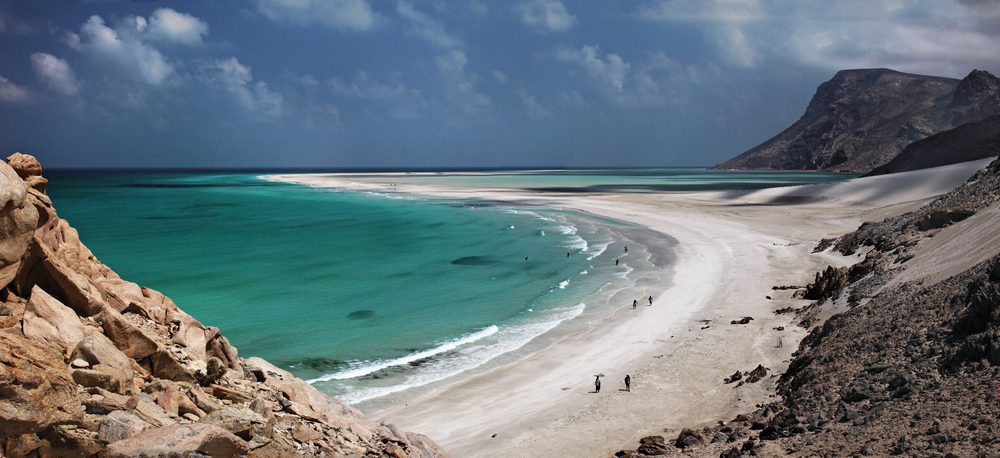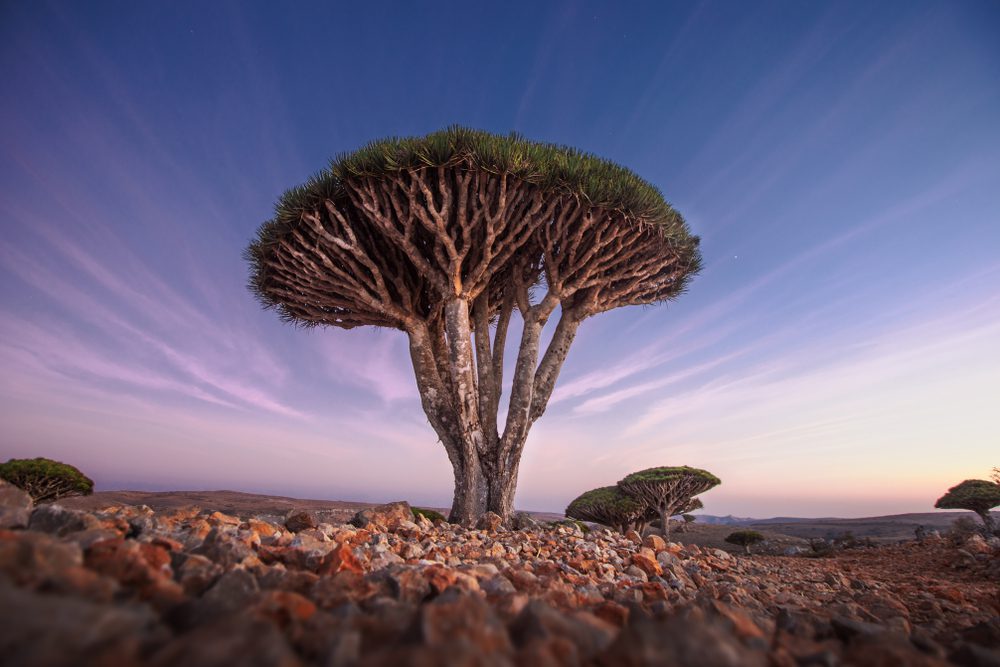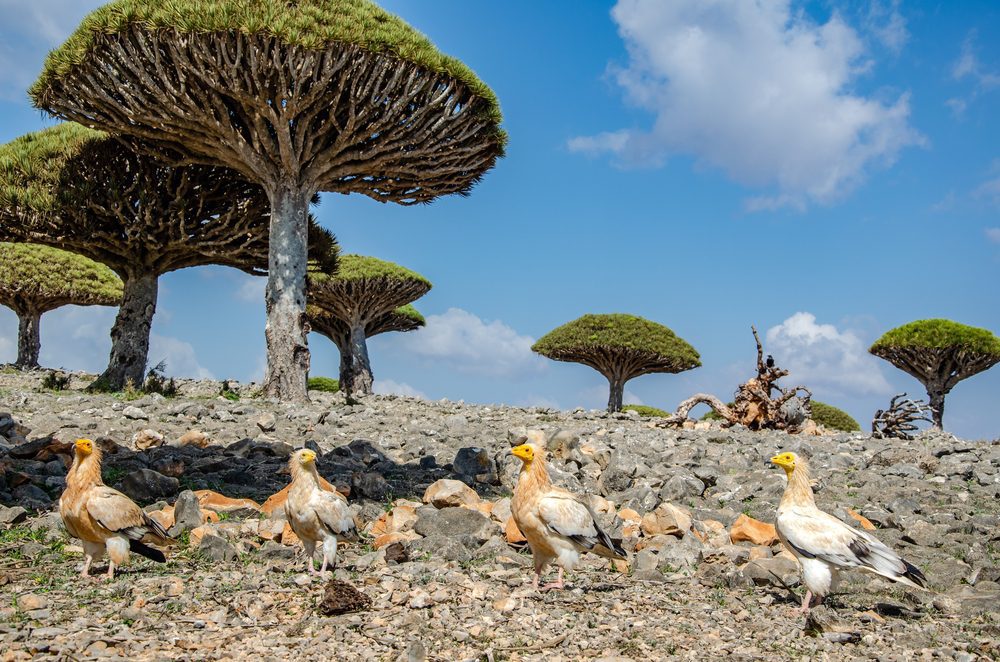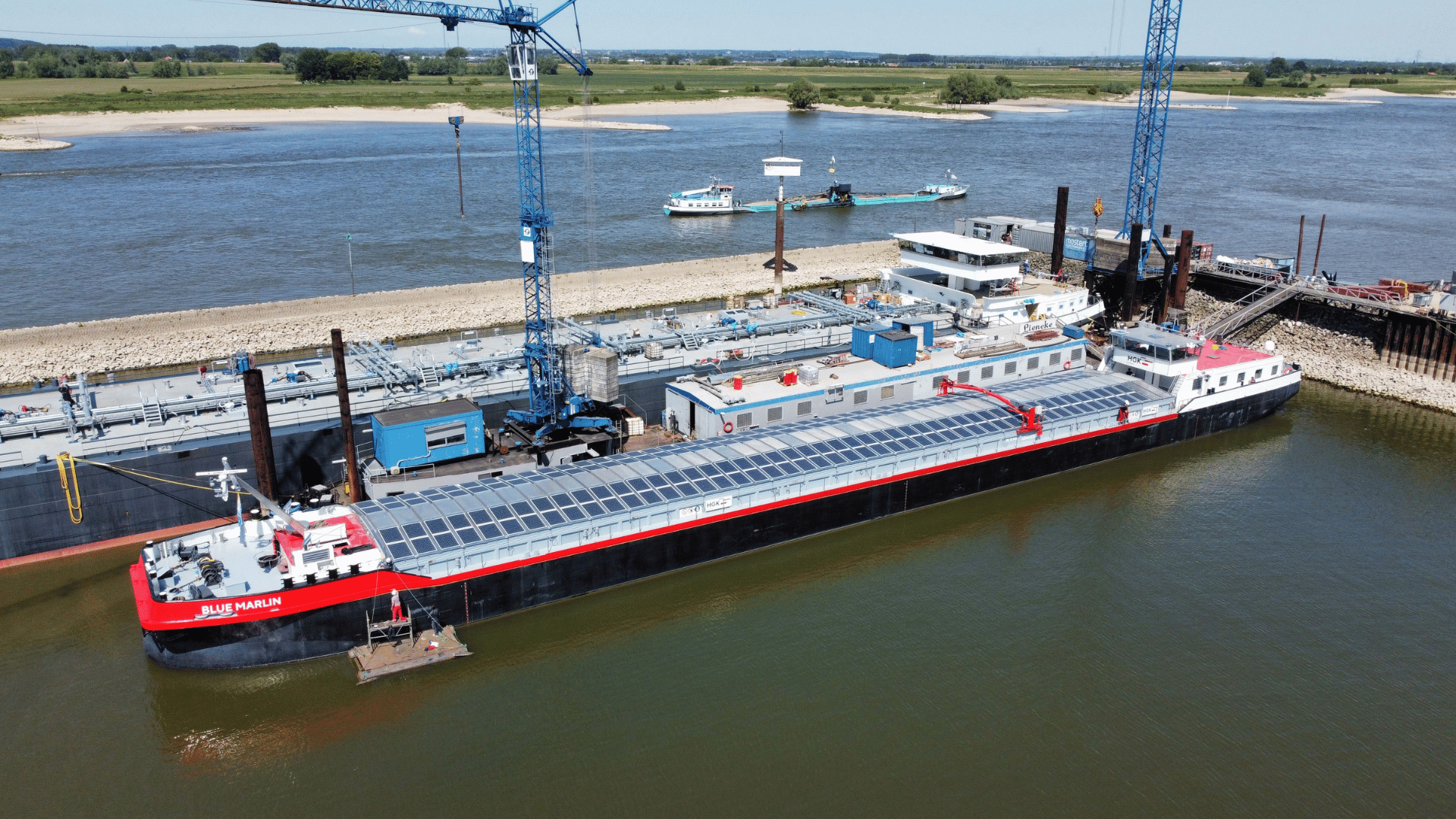There are many wonders contained in the Island of Socotra, located 210 miles of Southeast Yemen. But of its many wonders, it’s perhaps most known for its diverse plants, animals, and ecosystems.

Landscape
The Island of Socotra is the largest island of the Indian Ocean archipelago, residing approximately 150 miles east of the Horn of Africa. One of the main landscape features of the island is the plateau of Cretaceous limestone, averaging 1000-2000 feet in elevation. Coastal plains can be found around most of the island consisting mainly of alluvial soils of stone and sand. There are also sand dunes in some areas, particularly in Noged Plain which is about 37 miles long. The ecoregion’s climate is strongly affected by either southwest or northeast, depending on the time of year.
Climate
Rainfall is sporadic in Socotra (with some years charting no rainfall) but the mean annual rainfall ranges from 6 inches on the coastal plains to around 40 inches in the mountains. Alternative sources of water like nocturnal dew, groundwater, and mist are more important sources of water and help support the various plant and animal species that call the island home. The mountainous cloud zone provides groundwater and running water for the entire island. And the dew and mist are channeled into small brooks and rivulets that support aquatic fauna and may flow the entire way from the mountains to the sea in winter.

Plant and Animal Life
The climate has resulted in a broad mosaic of plant communities on Socotra. The coastal plains and inland hill areas consist of Croton socotranus and trees of Euphorbia arbuscula, Ziziphus spina-christi, Dracaena cinnabari (Dragon’s Blood Tree), and Dendrosicyos socotranus. Grasses and herbs are also able to grow after sufficient rainfall. The most widespread vegetation is species-rich open shrubland found on the coastal foothills and the limestone escarpments. Two endemic species, Croton socotranus and Jatropha unicostata, are the main shrubs and the most abundant plants on Socotra.
There are 850 recorded plant species on Socotra, of which approximately 230 to 260 (about 30 percent) are endemic. Additionally, some of the plants on Socotra represent the last surviving members of their genus. Plant species found here have evolved physiological and morphological adaptations to cope with the dry climate and powerful winds. For example, Adenium socotranum has a special cell sap cycling within the caudex which helps to prevent overheating.

There are seven terrestrial mammals and 178 known bird species on the island. At least 30 species are known to breed on Socotra, including a significant population of Egyptian vultures. There are also 24 species of reptiles, of which the burrowing legless Pachycalamus Brevis is considered to be a descendant of an ancient and once widely distributed Afro-Arabian herpetofauna.
Discover more about the World of Inspiration, and see the wonder of the Southwest, Antarctica’s desert, and Ireland’s Cliffs of Moher.







